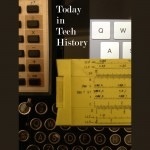 In 1939 – In a garage in Palo Alto, California, William Hewlett and David Packard founded Hewlett-Packard a little company that made audio oscillators– and later TouchPads.
In 1939 – In a garage in Palo Alto, California, William Hewlett and David Packard founded Hewlett-Packard a little company that made audio oscillators– and later TouchPads.
In 1983 – A new Internet and Transmission Control Protocol (Yep called IP/TCP by some at the time, weird I know) went into effect on the ARPANet, replacing the Network Control Protocol. The result was a new ARPA Internet combining ARPA hosts of the time new systems.
In 1985 – The Nordic Research Network NORDUnet registered the first domain name NORDU.NET.
Subscribe to the podcast.Like Tech History? Get the illustrated Year in Tech History at Merritt’s Books site.